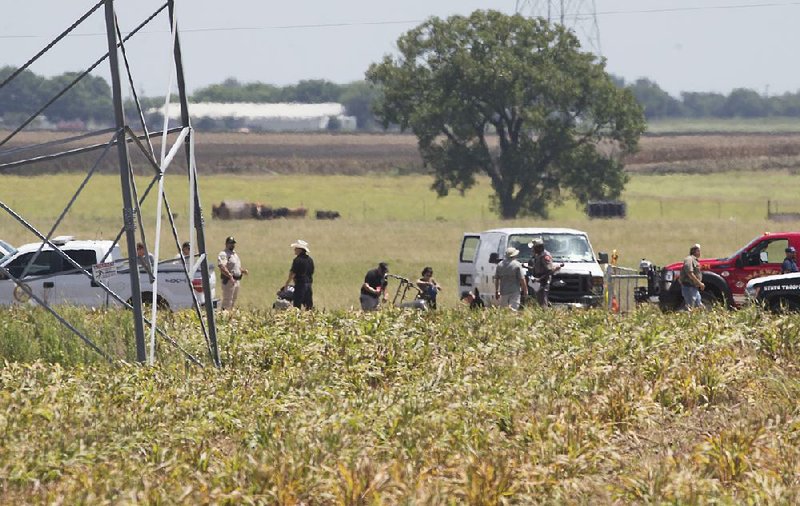LOCKHART, Texas -- A hot-air balloon carrying 16 people caught fire and crashed in central Texas on Saturday, federal officials said, and Texas authorities said there were no survivors.
Saturday's crash happened about 7:40 a.m. in a pasture near Lockhart, about 30 miles south of Austin.
Erik Grosof with the National Transportation Safety Board said it was his "understanding" that the balloon tour was operated by a company called Heart of Texas Balloon Rides. Other officials confirmed that on condition of anonymity because they weren't authorized to speak publicly.
Calls to the company were not answered, but a person who spoke at its reservations service said the company offered flights in the Austin area that coincide with the sunrise. It also operates in other areas, such as near San Antonio. She declined to speak about the crash.
The company's website states that it has balloons capable of carrying 24 people.
A spokesman for the Federal Aviation Administration said the agency was unable to immediately provide information on any accidents or enforcement actions related to the balloon company.
The names of the pilots and passengers, and their relationships to one another were not released. Caldwell County Sheriff Daniel Law said it was a balloon for which people could walk up and buy a ticket -- unlike an airplane, which would have a list of passengers' names.
The crash site is mostly farmland, with corn crops and grazing cattle. Cutting through that farmland is a row of high-capacity transmission lines that are 4-5 stories tall. The location of the crash appears to be under the overhead lines, though authorities would not provide details about that.
Bruce Lavorgna, spokesman for the Central Texas Ballooning Association, has been flying balloons for 26 years. He said power lines are the most common cause of balloon crashes.
"They're very difficult to see from the air," Lavorgna said. He said he asks his passengers to tell him if they see any lines.
Joe Gonzales and his wife, Erika, said that before the balloon crashed, they saw it from their car.
"I'd never seen one like that with that many people," Joe Gonzales said. "It just didn't look right."
Erika Gonzales said she snapped a photo of the red, white and blue balloon as they passed.
Margaret Wylie lives about a quarter-mile from the crash site and said she was letting her dog out Saturday morning when she heard a "pop, pop, pop," and her dog "really started raising the roof" for what at first she thought was a tractor exploding.
"I looked around, and it was like a fireball going up," she said, noting that the fireball was under power transmission lines and almost high enough to reach the bottom of them.
"At 66, that's not something I want to see again," she said.
Wylie, who called 911, said the weather was clear. She said she frequently sees hot-air balloons in the area.
A sheriff's office statement said that when emergency responders arrived at the scene, "it was apparent that the reported fire was the basket portion of a hot-air balloon."
Grosof said at a news conference that a full-blown investigation will begin today when more federal officials arrive.
Asked to confirm reports about the number of deaths, Grosof said, "Right now we have a number of fatalities."
Before Saturday, the worst balloon accident in the United States was in August 1993 in Woody Creek, Colo., near Aspen, when a wind gust blew a balloon into a power line complex. The basket was severed and fell more than 100 feet to the ground, killing all six people aboard.
Texas Gov. Greg Abbott issued a statement extending his condolences, calling the accident a "heartbreaking tragedy."
"Our thoughts and prayers are with the victims and their families, as well as the Lockhart community," he said. "The investigation into the cause of this tragic accident will continue, and I ask all of Texas to join us in praying for those lost."
Information for this article was contributed by Jim Vertuno, Jamie Stengle and Joan Lowy of The Associated Press; by James Barragan, Philip Jankowski and Jane Wester of the Austin American-Statesman; and by David Montgomery and Christine Hauser of The New York Times.
A Section on 07/31/2016
